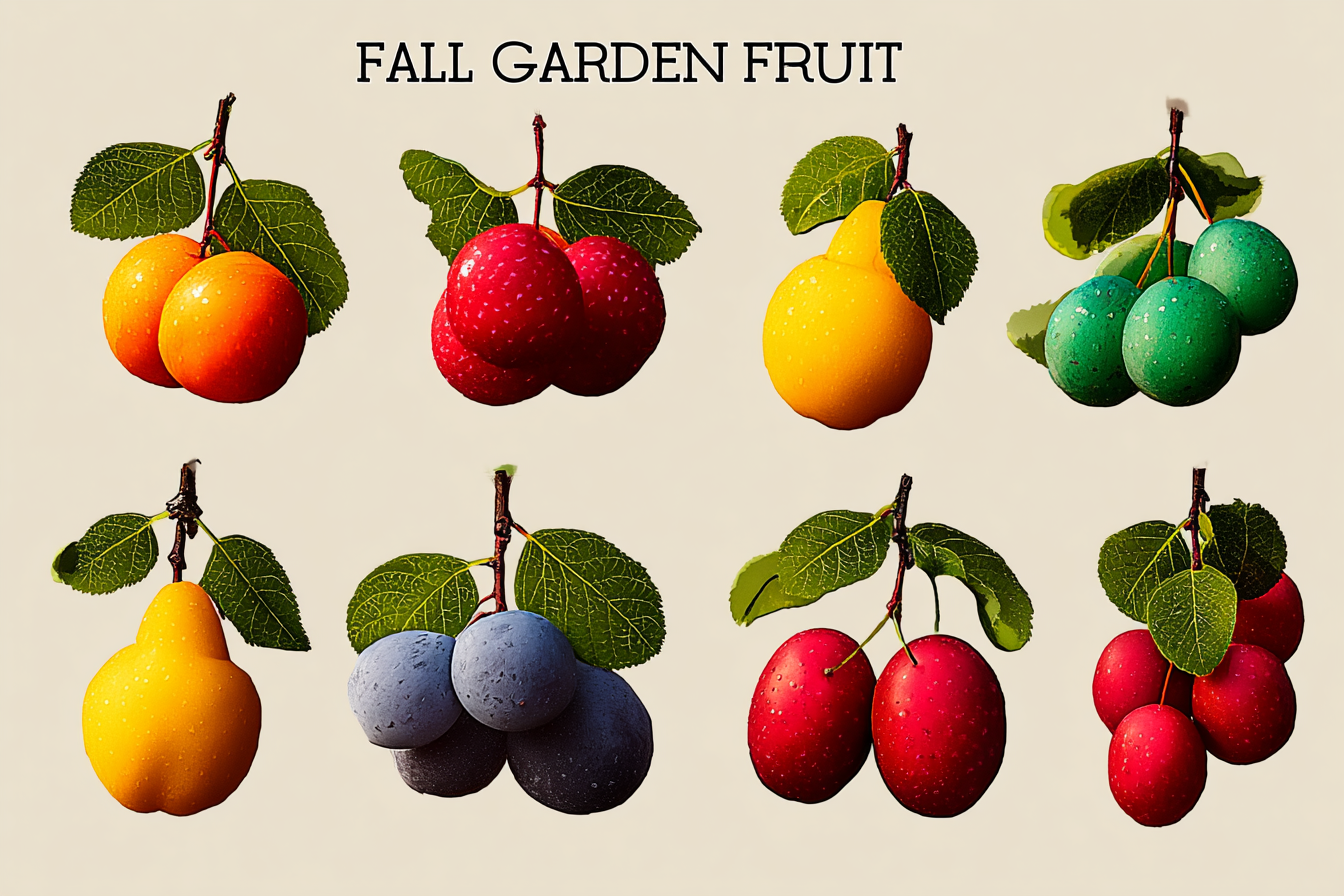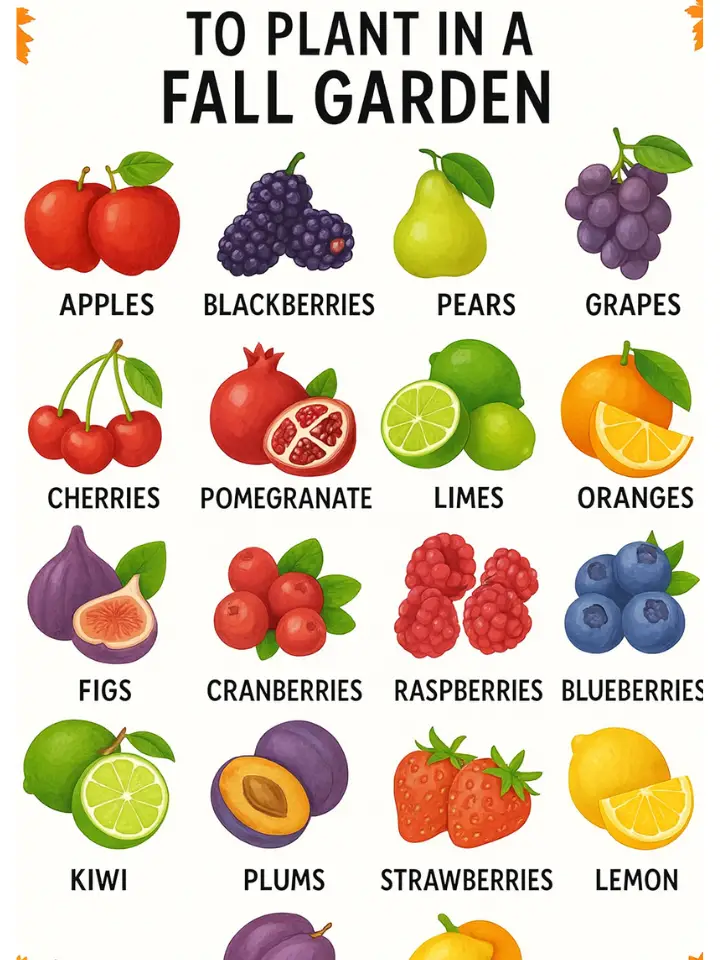Fall Garden Fruit to Plant: Best Fruits for Autumn Growing
Fall Garden Fruit to Plant: A Complete Guide to Autumn Harvests
When the air turns crisp and leaves scatter across the ground, your garden enters one of its most powerful seasons. While many people think spring is the time to start new life in the soil, you actually gain a huge advantage by planting in the fall. Cooler air, softer soil, and the gentle rhythm of the season create the perfect conditions for fruit trees, berry bushes, and vines. By choosing the right fall garden fruit to plant, you set yourself up for sweeter harvests and stronger plants in the years to come.
This guide walks you through everything you need to know: the best fruits for fall planting, how to prepare your soil, care tips, companion planting, recipes, and answers to the most common questions gardeners have.
Why Fall Is the Perfect Season for Planting Fruit
When you plant fruits in fall, you give them a head start. The roots keep growing quietly through autumn and even winter, while the top of the plant rests. That hidden activity below the soil sets the stage for explosive growth in spring.
Here are some benefits you’ll notice:
- Less stress on plants: Cooler temperatures mean your fruit trees or shrubs won’t burn out under summer heat.
- Moisture retention: Fall rains help the soil stay damp, reducing the need for constant watering.
- Earlier harvests: By spring, the roots are already established, so your plants focus energy on flowers and fruit.
- Fewer pests and weeds: Many pests slow down in fall, giving your plants a calmer start.
If you’ve ever struggled with weak seedlings or delayed harvests, planting in fall may be the solution you’ve been missing.
Some fruits thrive when planted in cooler soil and shorter days. Here’s a detailed list, broken into groups to help you plan your autumn garden.
Orchard Fruits
Apples
Few things feel as classic as biting into a crisp apple picked from your own tree. Fall planting helps apple trees establish roots before winter. Choose a sunny spot with well-drained soil.
Pears
Pears are low-maintenance and forgiving. They adapt to different climates and soils, making them perfect if you’re just starting out.
Plums
Plum trees love fall planting. They burst with blossoms in spring and reward you with sweet or tart fruits depending on the variety.
Berry Bushes
Blueberries
These berries are antioxidant powerhouses and do best in acidic soil. Fall planting allows their shallow root systems to settle without the stress of summer heat.
Raspberries
Fast-growing and generous, raspberries planted in fall give you strong canes ready to fruit by summer.
Blackberries
Hardy and resilient, blackberries are perfect for hedgerows. They establish quickly in fall and spread vigorously.
Cranberries
Ideal for wetter soils, cranberries are great if you live in cooler regions. Plant them in fall for a nutrient-rich harvest.
Exotic and Citrus Options
Pomegranates
In warmer climates, fall is the best time to plant pomegranates. Their jewel-like seeds are packed with antioxidants.
Figs
Figs thrive in mild climates and fall soil. They’re drought-tolerant and provide luscious, sweet fruits.
Citrus (Oranges, Lemons, Limes)
If you live in a frost-free area, citrus trees planted in fall have time to establish roots before spring. In cooler zones, consider planting them in pots so you can protect them from frost.
Kiwi
This climbing vine adds an exotic touch. It needs support, sun, and space, but fall planting helps it root deeply before its spring growth.
Nutritional Benefits of Fall Garden Fruits
| Fruit | Key Nutrients | Main Health Benefit | Planting Tip |
|---|---|---|---|
| Apples | Fiber, Vitamin C | Boosts digestion & immunity | Plant in full sun with good drainage |
| Blueberries | Antioxidants, Vitamin K | Supports brain & heart health | Acidic soil and mulching help growth |
| Pomegranates | Polyphenols, Vitamin C | Reduces inflammation | Needs warm climate and deep watering |
| Lemons | Vitamin C, Potassium | Strengthens immunity | Protect from frost, full sun needed |
| Figs | Calcium, Fiber | Improves bone health & digestion | Best in mild fall climates |
This table not only highlights why these fruits are great for your body, but also gives you practical planting tips to boost your garden’s success.
How to Prepare Soil for Fall Fruit Planting
Before you place a single root in the soil, preparation is key. Healthy soil equals healthy fruit.
- Test your soil pH – Blueberries need acidic soil, while citrus prefers neutral. A simple kit will guide you.
- Add compost – Rich, organic matter feeds young roots and helps retain moisture.
- Ensure drainage – Fruits like figs and citrus hate soggy roots. If your soil is heavy, mix in sand or perlite.
- Mulch generously – A layer of straw or leaves protects roots from frost and keeps the soil moist.
Common Mistakes to Avoid
Even seasoned gardeners slip up when planting fruits in fall. Watch out for these errors:
- Planting too shallow or too deep (follow nursery guidelines).
- Overwatering when the soil is already moist.
- Ignoring climate—don’t plant citrus where frost is certain.
- Forgetting pollinators—many fruits need a partner plant nearby.
By avoiding these mistakes, you’ll save yourself frustration and wasted time.
Seasonal Care Tips for Fall Garden Fruits
Your plants need more than soil preparation. Here’s how you help them thrive:
- Water wisely: Aim for deep watering once a week, not daily splashes.
- Protect against frost: Use covers or fleece for young trees and delicate citrus.
- Prune carefully: Remove weak or broken branches before winter.
- Fertilize lightly: Add compost or organic fertilizer, but avoid heavy nitrogen.
Companion Planting with Fruits
Planting fruits alongside the right companions brings natural protection and balance.
- Herbs: Basil, mint, and lavender attract pollinators and repel pests.
- Flowers: Marigolds deter nematodes, while sunflowers attract bees.
- Leafy greens: Spinach or lettuce grow quickly around fruit trees without stealing nutrients.
Simple Recipe: Warm Apple & Pear Compote
Cooking with your own harvest is one of gardening’s sweetest rewards. Here’s a fall recipe that’s both simple and delicious.
Ingredients
| Ingredient | Quantity |
|---|---|
| Apples | 4 |
| Pears | 3 |
| Cinnamon stick | 1 |
| Honey | 2 tbsp |
| Lemon juice | 1 tbsp |
Steps
- Chop apples and pears into bite-sized cubes.
- Place in a pot with honey, lemon juice, and a cinnamon stick.
- Simmer on low heat for 15 minutes until fruits soften.
- Serve warm over pancakes, yogurt, or oatmeal.
This recipe proves how rewarding it feels to eat directly from your fall garden.
Frequently Asked Questions (FAQ) about Fall Garden Fruit to Plant
What fruits grow best in a fall garden?
Apples, pears, plums, blueberries, raspberries, figs, and citrus (in warm climates) are excellent choices for fall planting.
Can strawberries be planted in fall?
Yes. In fact, fall planting helps strawberries build strong roots for an early and abundant spring crop.
How long does it take to see fruit from fall planting?
Berries often fruit the next summer. Fruit trees like apples and pears may take 2–3 years.
Should you fertilize fruit trees in fall?
Light compost or organic matter is fine. Avoid high-nitrogen fertilizers which push leafy growth instead of root strength.
Can you plant citrus in cold climates during fall?
Yes, but only in containers. This way, you can move them indoors when frost hits.
Conclusion
Planting fall garden fruit is more than a gardening task—it’s an investment in your future harvests, your health, and the joy of eating straight from your backyard. By starting in autumn, you give your fruits the strongest possible foundation to thrive.
Now it’s your turn: grab your tools, test your soil, and choose your fruits wisely. Whether you dream of apple pies, blueberry smoothies, or fresh lemon water, your fall garden is the key to making it happen.



0 Comment